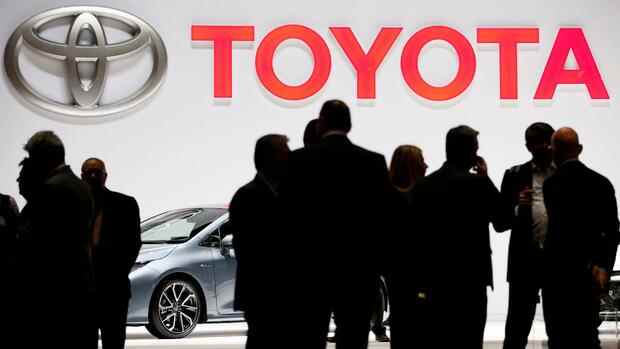Even in the chip crisis, the Japanese have reliably presented good numbers.
(Photo: Reuters)
Tokyo Despite the global chip crisis, Toyota increased its profits in the second fiscal quarter more than expected by experts. The world’s largest automaker pointed to a recovery in demand and a weaker yen on Thursday. The operating profit in the period to the end of September rose 48 percent to 750 billion yen (about 5.7 billion euros).
According to refinitive data, experts had expected 593.3 billion yen. Toyota raised its profit forecast for the full year to 2.8 trillion yen from 2.5 trillion previously. This corresponds to an operating profit margin of 9.3 percent, a very high figure for a mass manufacturer.
However, analysts expect an average of 2.92 trillion yen here. Toyota is now assuming deliveries of 10.29 million vehicles for the full year after 10.55 million previously.
Toyota revised down its production target for this month in mid-October due to the ongoing semiconductor shortage. Production should therefore be up to 15 percent lower, which would have meant 100,000 to 150,000 fewer vehicles. At that time, the Japanese company was still planning to make up for the loss in December and stuck to its production target for the fiscal year.
Top jobs of the day
Find the best jobs now and
be notified by email.
Toyota initially got through the chip crisis better than other car manufacturers. The background to this are lessons learned from the Fukushima disaster: It improved its supply chain management and required its suppliers to keep components in stock for up to six months.
Immediately after the numbers became known, Toyota’s share price jumped almost five percent for a short time. Because the high profits also pay off for the shareholders. The expected by Toyota 2.5 trillion yen (18.8 billion euros) net profit, ten percent more than 2020. The group therefore wants to increase the interim dividend by 15 to 120 yen (0.91 euros) and buy back shares for 150 billion yen.
Toyota: Exceptional position in Japan’s auto industry
Nevertheless, Toyota’s CFO drew a negative conclusion and apologized at the beginning to dealers, suppliers, investors and customers for the inconvenience caused by the production cutback. Without high exchange rate gains, the forecast would have been significantly lower due to higher commodity prices, Kon noted.
But even this caution cannot hide the fact that Toyota’s new forecast is still conservative in view of the half-year profit.
Because: Toyota posted a profit margin of 11.3 percent for the first half of the year. In the previous year it was 4.6 percent in the same period. Production in this half-year was 4.1 million cars due to chip bottlenecks, 550,000 cars below the pre-crisis level. The fact that the automaker was able to increase profits so sharply underlines its current exceptional position in Japan’s auto industry.
Toyota has prepared for crises
One reason for the increase in profits during the crisis: After natural disasters in Japan had shut down domestic production twice for months, Toyota examined its supply chain for possible breakpoints, relied more on standard components in its design and increased its inventory of key components.
In addition, at the beginning of the corona crisis, the group was keen to signal its suppliers’ confidence. As the only Japanese automaker, the company dared to issue an annual forecast that assumed increasing sales in the second half of the year.
Together with the permanent cost reduction, for which Toyota works closely with its suppliers, these measures paid off at the beginning of the chip crisis. While other manufacturers had to cut production significantly at the beginning of the year, Toyota continued to produce almost undisturbed.
It was only when a large corona wave in Southeast Asia forced many local plants in the chip supply chain to close this summer that Toyota had to massively shut down its production for the first time. But Toyota’s CFO Kon stated that the group could at least partially absorb the lost production through other measures.
Dealers would reduce their stocks in order to bridge the slump. In addition, manufacturers can reduce financial incentives to buy, since demand significantly exceeds supply. The rising used car prices are also having a positive effect on the balance sheet through the Group’s finance division.
This prudent course is now paying off. However, Toyota continues to look cautiously into the future. Kon expected that the supply of chips and components would improve significantly. “But we continue to see risks after December,” said Toyota’s chief financial officer.
More: Toyota arrives late, but reliably – the new electric car bZ4X can do that
